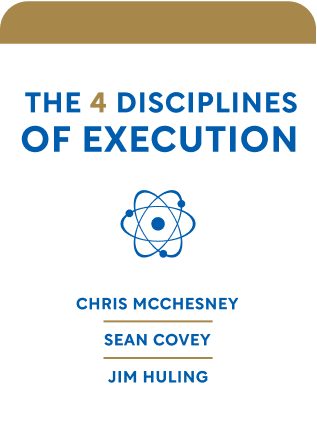

This article is an excerpt from the Shortform book guide to "The 4 Disciplines of Execution" by Chris McChesney, Sean Covey, and Jim Huling. Shortform has the world's best summaries and analyses of books you should be reading.
Like this article? Sign up for a free trial here .
Are you working on brainstorming goals? Should you do it by yourself or with a group of people? What are the best methods?
In The 4 Disciplines of Execution, having a wildly important goal to focus on is the first step. Brainstorming goals can help you identify the perfect one to work on executing.
Keep reading for three methods for brainstorming goals.
Three Methods for Brainstorming Goals
To brainstorm, come up with ideas on your own and consult team members and peer leaders, if applicable.
Brainstorm on Your Own
Brainstorming goals for a list of possible WIGs is a good idea even if you think you already know what the WIG should be. Ask yourself, “If everything about my organization stayed the same, where would a change have the most impact?” (Don’t ask, “What’s most important?”—you’ll get distracted by the whirlwind and other people’s opinions.) Come up with as many ideas as you can. The more ideas you have to choose from after brainstorming goals, the better your final WIG will be.
To come up with ideas, look within and outside of the whirlwind, and consider your mission.
- If you’re choosing a WIG from inside the whirlwind, your options are:
- Something that’s very badly broken that absolutely must be fixed, for example, going over budget
- Something in your value proposition that isn’t working, for example, unsatisfactory customer service
- Something that’s already going well but would have a large effect even if it was only improved a little, for example, an increase from 80% to 90% satisfaction could generate a lot more revenue
- If you’re choosing from outside the whirlwind, your WIGs will usually be about strategy. (This kind of WIG will be totally new to your team and will require an even bigger change in behavior.)
- For example, you might want to launch a new product
- If you’re choosing something to align with your mission, consider results beyond your organization
- For example, a thrift-store chain got a new president. The old president had done a good job and the company was doing well financially and operationally, so the company looked at choosing a WIG to do with their mission, which was to help people with disabilities and people who are homeless become more self-reliant. They eventually decided that the WIG should be to help workers with disabilities find jobs outside their organization. The thrift-store company couldn’t hire every person with a disability, but they did have the capacity to train them in retail.
Brainstorming Goals With Team Members
Including team members in the discussion of choosing a WIG increases their engagement with that WIG. They have different skill sets and knowledge bases than you, so they might come up with ideas you never could have. They’ll also be the people doing a lot of the work in the next three disciplines, so it’s important they be consulted when brainstorming goals.
In addition to the same things you would consider yourself, consult your teammates on the following:
- To achieve the overall WIG, what area of team performance do you want to improve? (Assuming that all current performance stays the same)
- In areas where the team is already succeeding, what one strength would you improve even more to contribute to the overall WIG?
- In areas where the team is struggling, what one weakness most needs to be improved?
(If your team is really big, you can talk to a representative group.)
Brainstorm with Peer Leaders
Peer leaders are particularly important to consult when your organization has an overall WIG. These leaders may depend on you, or you on them. While brainstorming with peer leaders, in addition to the same things you’d consider alone, ask for ideas regarding:
- If your team is part of an organization with many goals, figure out which goals are most important.
- If your organization already has an overall WIG, come up with ideas that will directly contribute to it.
- If the team is the whole organization, come up with ideas that will grow the organization or support the mission.
If your team is a support function (HR, finance, IT, and so on), wait to choose your team WIG until after the line functions finalize theirs. Then, you can use your WIG to help them achieve theirs. For example, if a sales team wants to move to a new model, HR can choose a WIG that involves helping people get the training they need.

———End of Preview———
Like what you just read? Read the rest of the world's best book summary and analysis of Chris McChesney, Sean Covey, and Jim Huling's "The 4 Disciplines of Execution" at Shortform .
Here's what you'll find in our full The 4 Disciplines of Execution summary :
- The 4 disciplines that can make any strategy a successful reality
- Why a great plan falls apart when you don't think adequately about execution
- The 6 steps you need to scale the 4DX model across an entire organization






